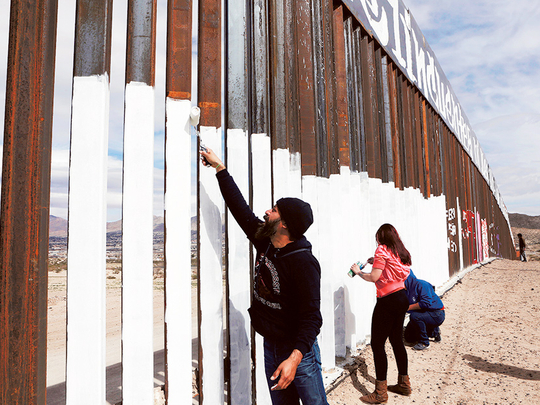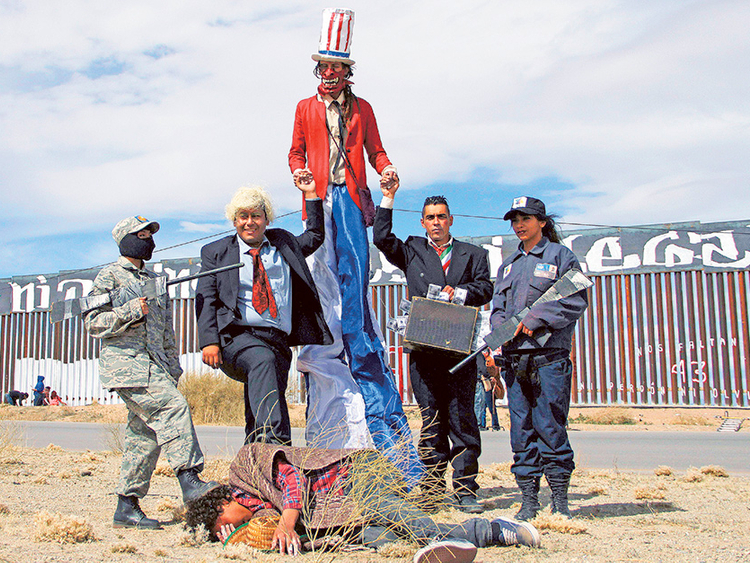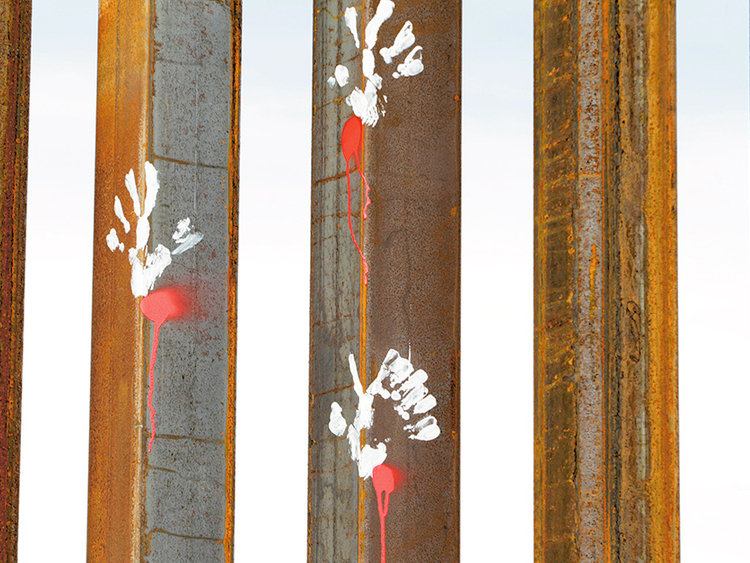
Montreal: Built to keep out migrants, traffickers, or an enemy group, border walls have emerged as a one-size-fits-all response to the vulnerability felt by many societies in today’s globalised world, says an expert on the phenomenon.
Practically non-existent at the end of the Second World War, by the time the Berlin Wall fell in 1989 the number of border walls across the globe had risen to 11.
That number has since jumped to 70, prompted by an increased sense of insecurity following the September 11, 2001 attacks in the United States and the 2011 Arab Spring, according to Elisabeth Vallet, director of the Observatory of Geopolitics at the University of Quebec in Montreal (UQAM).
One third were intended to bring an end to a conflict, Vallet says, such as between north and south Cyprus, the two Koreas, and India and Pakistan.
But in recent years “three distinct types of walls have appeared, including anti-migration walls — the most common — anti-trafficking walls and antiterrorism walls,” she said.
For Vallet, walls or fences are often used as a “turnkey response” to a sense of vulnerability felt when “migratory pressures are changing the nature of a society’s identity, or exerting economic pressure.”
That is the case, she says, in Bulgaria, Greece or Hungary — and most prominently in the United States where President Donald Trump’s flagship campaign promise was to build a wall on the border with Mexico.
Typically they represent “the divide between rich and poor, north and south,” said Vallet.
And in an electoral context, walls are typically linked to questions of “identity,” used by demagogues to cast neighbours in a bad light — and reinforce a sense of them and us.
Vallet cites data from US border officials that shows that “walls deter and slow down people, but walls never keep them out.”
In some cases, there is evidence that moves to close borders can actually drive people who had not taken the decision to migrate to do so, she said, with walls fuelling the migration they are intended to curb.
Meanwhile their dissuasive power is limited, she says, pointing at the depth of despair that drives migrants to undertake perilous migrations, with newborns in their arms, and exposing themselves to extreme personal danger.
“Ninety per cent of women will take a contraceptive, presuming not that they could be raped — but that they will be.”
“A wall is extraordinarily expensive,” she said — money that could be better spent addressing the factors behind migrant movements.
The cost of Trump’s planned border wall, for instance, could reach $21.6 billion (Dh79.32 billion), according to a Department of Homeland Security estimate circulated by US media.
Each kilometre of existing fencing between Mexico and the United States cost between one and eight million US dollars, Vallet noted.
Closing off the whole border, as Trump has vowed to do, by adding more than 2,000 kilometres of wall in “desert areas where the land is privately-owned and will have to be expropriated, will push the cost up to US$21 million per kilometre.”
“If that money were invested in peace missions ... or towards responding to the climate change that triggers food insecurity and migration,” Vallet believes it would have the potential to change “the course of history.”
“You need to invest in peace missions, in security — humanitarian corridors in Syria might have spared Hungary the need to build walls,” she said.














